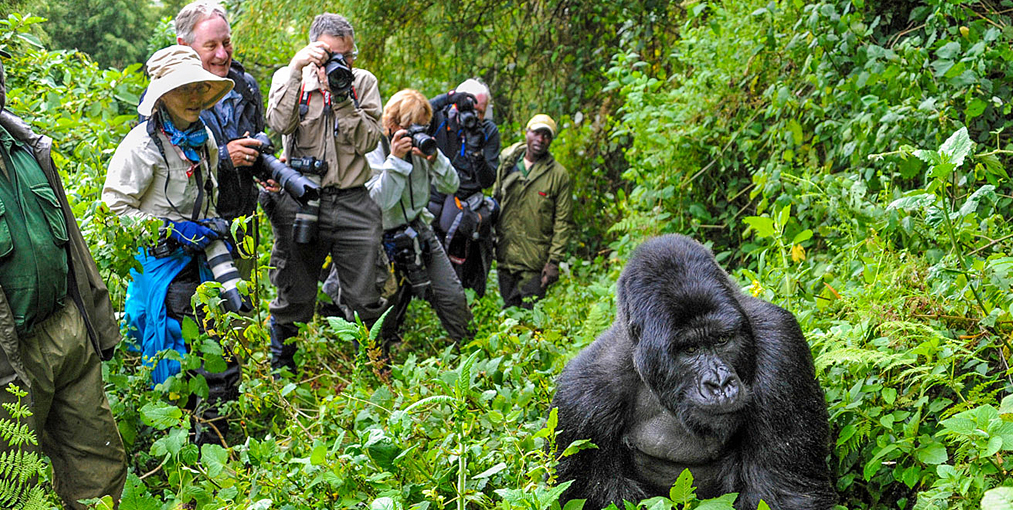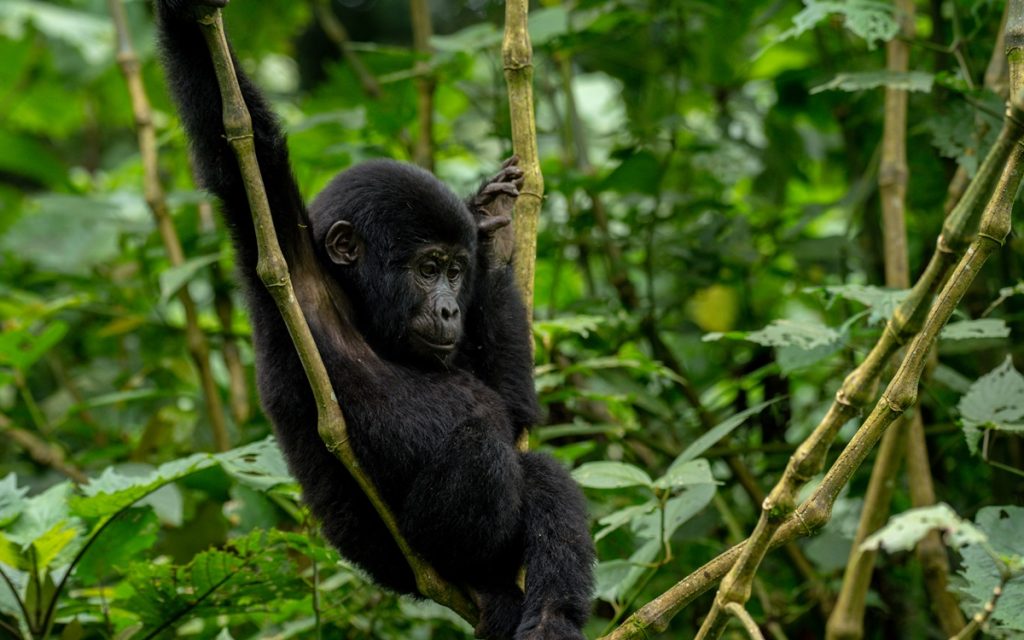- Written by: Anthony
- December 18, 2024
What is a group of Gorillas called?
What is a group of Gorillas called?
In short, a group of gorillas is called a troop (or simply a gorilla troop) sometimes, referred to as a gorilla family.
Many times when guests want to visit Uganda or Rwanda to see gorillas, they usually ask questions like what is a group of gorilla called? Or even what is a group of gorillas?
The main reason is many of you want to come when you have the basics right.
A single gorilla troop usually consist of about 20-50 members however sometimes, it may consist of just 5-10 members. This is usually if the new fully-grown backpack decides to move out of a group to form his own group where he will reign and dominate.
When the blackback moves out of a group, he does so with some few females and possible a few males that can accept him as the dominant one however, the group size and stability vary significantly across gorilla subspecies and populations. For example:
Mountain gorillas: Groups range from 2 to 65 individuals, with larger groups often including multiple silverbacks. Even in the presence of many silverbacks, there is only one dominant silverback.
Western lowland gorillas: Groups typically have a single silverback, several females, and their offspring. However, groups without adult females also exist.

What is a group of Gorillas called?
Suggested Safari Itineraries
Gorilla Group Sizes and Habitats
Eastern gorillas, such as mountain and Grauer’s gorillas, live in high-altitude forests with abundant terrestrial vegetation. These large, consistent food patches support bigger groups, sometimes over 30 individuals.
Western lowland gorillas live in forests rich in fruit trees. While fruit provides high energy, its patchy distribution limits group sizes, which rarely exceed 20 individuals.
Gorilla Life Cycle and Reproduction
Gorilla females give birth to a single infant every 4–5 years, with twins being rare. Key details:
Infants are weaned around age 3 and 4 before the female can be ready to mate and conceive another baby.
Female gorillas become pregnant again after 3–6 reproductive cycles, with an 8.5-month pregnancy.
There is a very high mortality rate of about 67%, leaving many infants not to survive before weaning. This is usually due to the conflicts that may arise in case the silverback is challenges, in case a new silverback emerges dominant, he may decide to kill all the un-weaned infants so as to be able to mate with the females.
After weaning, young gorillas stay with their mothers, playing with siblings and grooming. At sexual maturity (around age 8 to 10), females choose to either remain in their natal group or transfer to another.
Gorillas are very socially intelligent animals especially the mountain gorillas, they move out to avoid inbreeding. The females pay high respect for the silverback that raised them and do not want to be mated by him, so they move out with new adult blackbacks and form their own family.

Gorilla group in Bwindi Impenetrable National Park
Group Transfers and Male Dynamics
Male and female transfers happen when groups meet. Silverbacks display dominance through chest-beating and other behaviors. Female gorillas choose their groups based on these encounters.
Unlike other primates, solitary male gorillas don’t forcibly take over groups, as females can leave if dissatisfied.
Young males reach full maturity between 15–18 years. In mountain gorillas, males often stay in their natal group and mature alongside their dominant silverback waiting to challenge and takeover the dominant silverback or waiting for him to die so that one of them may takeover.
In western lowland gorillas, males leave their natal group and live alone or join non-breeding groups.
Recommended Safaris
Group Stability and Leadership
A given troop is led by a silverback or a blackback incase it’s a new group. This silverback gorilla decides on where the troop moves, mates the females, parents the infants and is responsible for the disciplining and settlement of disputes within the troop.
Mountain gorilla groups often persist for several generations. When a silverback dies, another—usually related—takes over. These groups may split into smaller ones, as seen at Karisoke, where one group became eight over two years.
Western lowland gorilla groups disband when the silverback dies, with females joining other groups. Feeding competition and smaller group sizes may explain why young males don’t stay in natal groups.
Conclusion
A visit to see the gorilla troop especially the eastern gorillas may be done only in Uganda’s Bwindi Impenetrable National park and Mgahinga Gorilla park, Rwanda’s Volcanoes National park and in Congo’s Virunga National park.
The gorilla permit that grants you access to sightsee the gentle giants in their natural habitat cost differently in each country. In Uganda, the gorilla permits costs USD 800, Rwanda the gorilla permit/pass costs USD 1,500 while the same costs USD. 450 in the D.R. of the Congo.
Friendly Gorillas safaris is happy to arrange to any destination of your choice. Feel free to engage us for advice and recommendation.
Anthony

Ready for your ultimate wildlife experience?
Chat with us, our team is always here to help!
You may also like …

Got any questions
about traveling to Uganda?
Get in touch.








